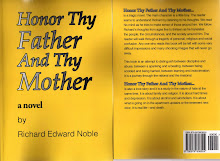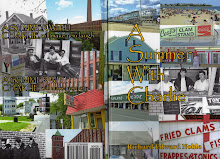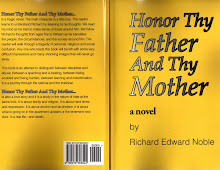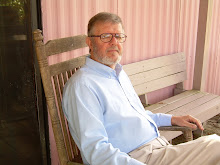Sacco and Vanzetti 1920 -1927
By Richard E. Noble
On April 15, 1920 there was a robbery in Braintree, Massachusetts. The paymaster for the Slater and Morrill Shoe Company, Frederick Parmenter and his assistant Alessandro Berardelli were shot to death. Fifteen thousand dollars was taken.
Bridgewater Chief of Police, Michael Stewart with the help of officer, Michael Connolly, on May 5, 1920 arrested Nicola Sacco, a shoe maker, and Bartolomeo Vanzetti, a fish peddler on the grounds of suspicion.
The subsequent trial and appeals went on for nearly seven years. On August 23, 1927 Sacco and Vanzetti were both electrocuted.
Their case received worldwide attention and is considered to be one of the most controversial cases of abuses by the legal establishment in the history of the United States. In fact, in 1985, new evidence was brought forward by William Young and David E. Kaiser which established the innocence of Sacco and Vanzetti beyond a reasonable doubt, claims historian Philip Foner in his voluminous and detailed “History of the Labor Movement in the United States”.
Mr. Foner also points out that on August 23, 1977 Governor Michael Dukakis on the fiftieth anniversary of their execution declared that “any stigma or disgrace should forever be removed” from the names of Sacco and Vanzetti.
Felix Frankfurter, the famous Harvard law school professor and later Supreme Court Justice wrote a piece for the Atlantic Monthly magazine at the time of the trial, questioning the proceeding of the trial and the conduct of Judge Thayer and the prosecution. The District Attorney, who was also severely criticized, was Frederick Katzmann.
In having witnesses identify Sacco and Vanzetti the police actually had the two men stand alone in the middle of a large room, posing as bandits.
The men were not told for the first two days of their arrest why they had been arrested. During these two days the men were never questioned about the crime for which they were being accused. They were instead questioned about their union activities, their political leanings, and the part they had or had not played in the recent World War.
Their fingerprints matched none determined to be connected with the robbery.
Sacco and his wife, Rose, had gone to the Italian consulate on the day of the robbery and subsequent killings, applying for passports. The clerk who had dealt with them on that day remembered them distinctly because they had brought a large family portrait as opposed to the usual small snapshot. The clerk thought that this was humorous and he showed it to others working in the consulate. He supplied a sworn affidavit to that fact from Rome. Others testified that they saw Sacco that day in a Boston restaurant.
Eleven townspeople testified under oath to the fact that Vanzetti was in Plymouth on that day selling eels. Some said that they had purchased eels from Vanzetti. But, even with the paid receipt for his barrel of eels, Judge Thayer continually maintained that Vanzetti had no proof that he had any eels to sell.
Jury foreman, Harry Ripley, told his buddy William Daly shortly before the trial that he would be on the jury in the case involving the “two ginneys” charged with murder in South Braintree. When his pal Daly offered that the two men might be innocent, Ripley allegedly said; “Damn them, they ought to hang anyway.”
Then there was the Proctor affidavit. Proctor was an expert witness for the state. He was also an old man, near death suffering from a guilty conscience. He testified that the state prosecution had orchestrated a frame-up. His affidavit showed that the prosecutor had asked him questions in such a way as to obfuscate the issues and make it appear that he was saying something that he really wasn’t. For example, Katzman wanted to ask him to state categorically that a murder bullet had been fired from Sacco’s gun. Proctor said that if he was asked such a direct question, he would say, no. Katzman then asked the question in such a manner that Proctor was able to answer; “My opinion is that it is consistent with being fired by that pistol.”
Judge Thayer constantly slandered the two accused men outside the courtroom. His slander and defamations were not kept secret. Even the defendants had heard what the judge had said about them.
Numerous and multiple appeals were made and then in the year 1925 a man named Celestina F. Madieros, who was awaiting an appeal from a conviction for bank robbery in Wrentham made a statement admonishing the guilt of Sacco and Vanzetti; “I hereby confess to being in south Braintree shoe company crime and Sacco and Vanzetti were not in such crime.” Madieros would not name his associates but it was easily established that he was associated with the well known Morrelli gang from Providence Rhode Island. The judge rejected the confession.
In point of fact, most of the evidence and testimonies in favor of Sacco and Vanzetti were rejected basically on the notion that it all came from people of their “type and kind”. And everybody knows that “those people” all stick together.
The real case against Sacco and Vanzetti had nothing to do with any robbery. They were murdered by the State of Massachusetts by Judge Thayer and prosecuting attorney Katzman with the cooperation of Governor Fuller, because of their politics and immigrant background.
“What I say is that I am innocent,” Vanzetti stated at his trial ... “That I am not only innocent ... but in all of my life I have never stole and I have never killed and I have never spilled blood … I have struggled all my life, since I began to reason, to eliminate crime from the earth ... I have struggled all of my life to eliminate crimes, the crimes that the official law and the official moral condemns, and the official moral and the official law sanctions and sanctifies - the exploitation and the oppression of the man by the man, and if there is a reason why I am here as a guilty man, if there is a reason why you in a few minutes can doom me, it is this reason and none else ... Eugene Debs say that not even a dog - something like that - not even the dog that kill the chickens would have been found guilty with the evidence that the Commonwealth have produced against us ... We have proved that there could not have been another judge on the face of the earth more prejudiced and more cruel than you have been against us ... Still they refuse a new trial ... We know and you know in your heart, that you have been against us from the very beginning, before you see us. We know that you have spoke yourself and have spoke your hostility against us and your despisement against us with friends of yours on the train, at the University Club of Boston, on the Golf Club of Worcester, Massachusetts. I am sure that if the people who know all what you say against us would have the civil courage to take the stand, maybe, Your Honor - I am sorry to say this because you are an old man, and I have an old father - but maybe you would be beside us in good justice at this time ... I am suffering because I am a radical and indeed I am a radical, I have suffered because I am an Italian, and indeed I am an Italian; I have suffered more for my family and my beloved than for myself, but I am so convinced to be right that if you could execute me two times, and if I could be reborn two other times, I would live again to do what I have done already ... I have finished. Thank-you.”
1“After the Fact”, Volume II, James West Davidson and Mark Hamilton Lytle, Alfred A. Knopf, New York.
2 “History of the Labor Movement in the United States, Volume 8 - Postwar Struggles 1918 - 1920, Philip S. Foner.
3 Ibid
4 Other books used in this essay: “The Annals of America” Vol. 14; “The Rebel Girl “by Elizabeth Gurley Flynn,
Subscribe to:
Post Comments (Atom)






































No comments:
Post a Comment